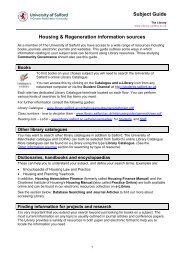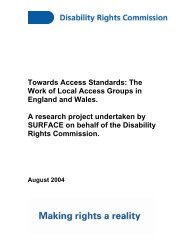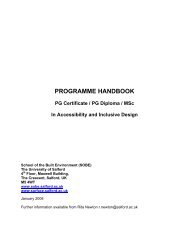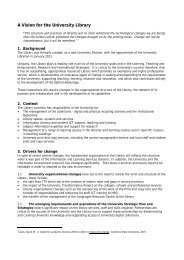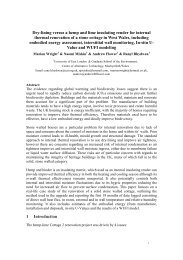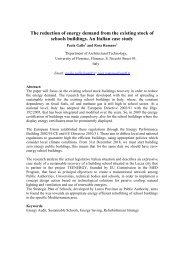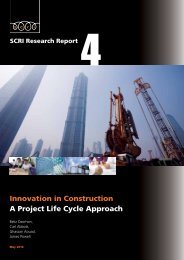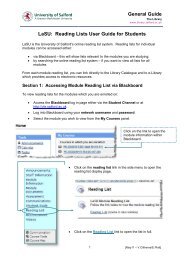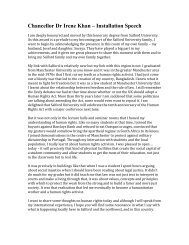Download a copy (pdf) - University of Salford
Download a copy (pdf) - University of Salford
Download a copy (pdf) - University of Salford
Create successful ePaper yourself
Turn your PDF publications into a flip-book with our unique Google optimized e-Paper software.
Study proves classroomdesign really does matterIn a pilot study by the <strong>University</strong> <strong>of</strong> <strong>Salford</strong> and architects Nightingale Associates,it was found that the classroom environment can affect a child’s academic progressover a year by as much as 25%.The year-long pilot study was carried outin seven Blackpool LEA primary schools.34 classrooms with differing learningenvironments and age groups took part.The study took two lines <strong>of</strong> enquiry.The first was to collect data from 751pupils, such as their age, gender andperformance level in maths, readingand writing at the start and end <strong>of</strong> anacademic year.The second evaluated the holisticclassroom environment, taking intoaccount different design parameters suchas classroom orientation, natural light andnoise, temperature and air quality. Otherissues such as flexibility <strong>of</strong> space, storagefacilities and organisation, as well as use<strong>of</strong> colour, were evaluated.This holistic assessment includes bothclassroom design and use factors toidentify what constitutes an effectivelearning environment.Notably, 73% <strong>of</strong> the variation in pupilperformance driven at the class level canbe explained by the building environmentfactors measured in this study.Current findings suggest that placingan average pupil in the least effective,rather than the most effective, classroomenvironment could affect their learningprogress by as much as the averageimprovement across one year.Through these promising findings, thestudy will continue for a further 18months and cover another 20 schoolsin different areas <strong>of</strong> the UK. This studyis being funded by the Engineeringand Physical Sciences Research Council(EPSRC) and the Principal Investigator isPr<strong>of</strong>essor Peter Barratt.73% <strong>of</strong> the variation in pupil performancedriven at the class level can be explainedby the building environment factorsmeasured in this study.May 2013 | 43



